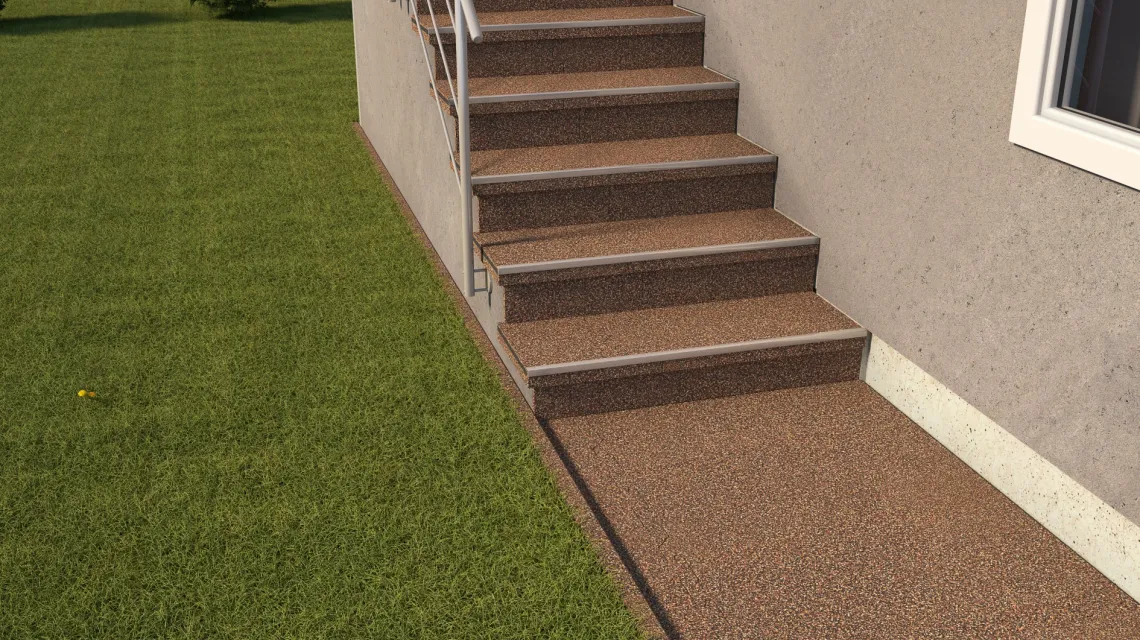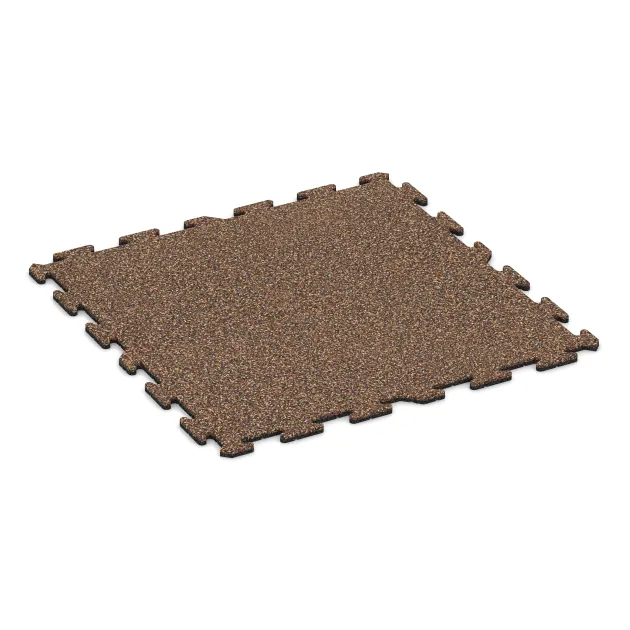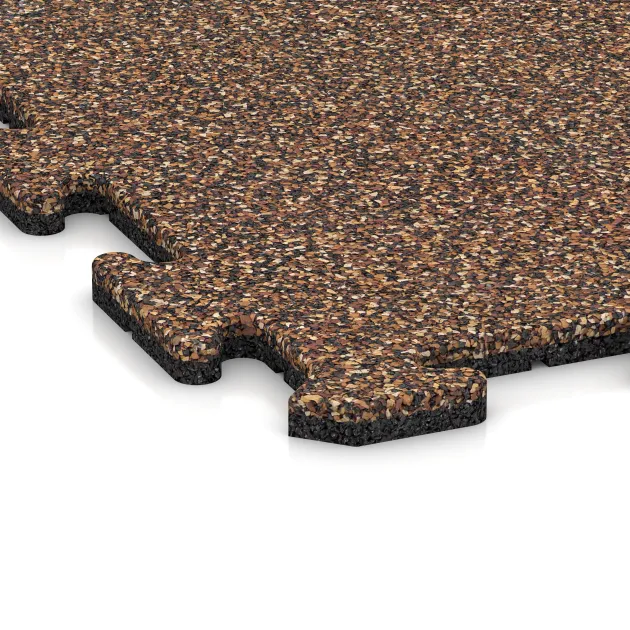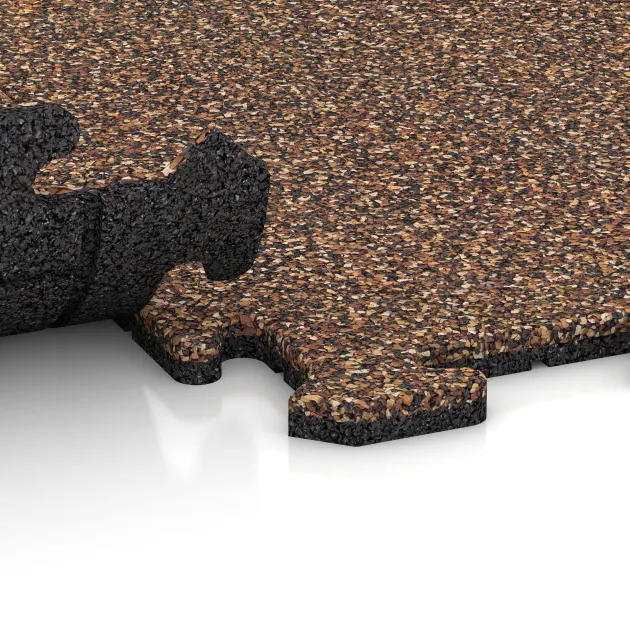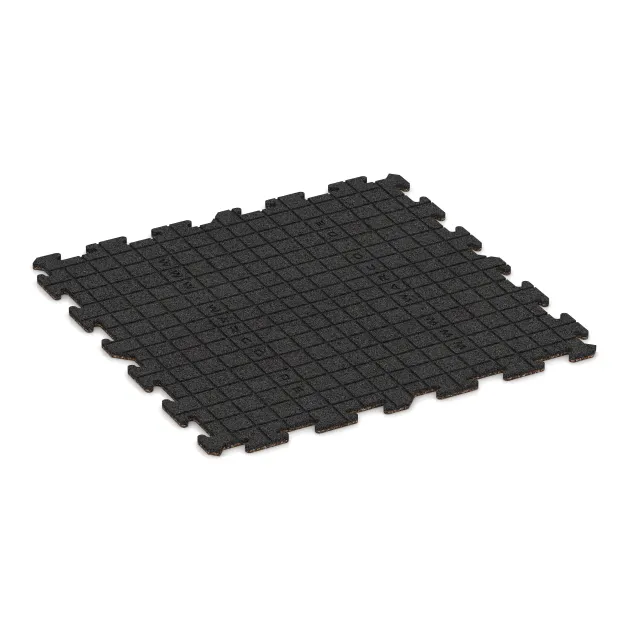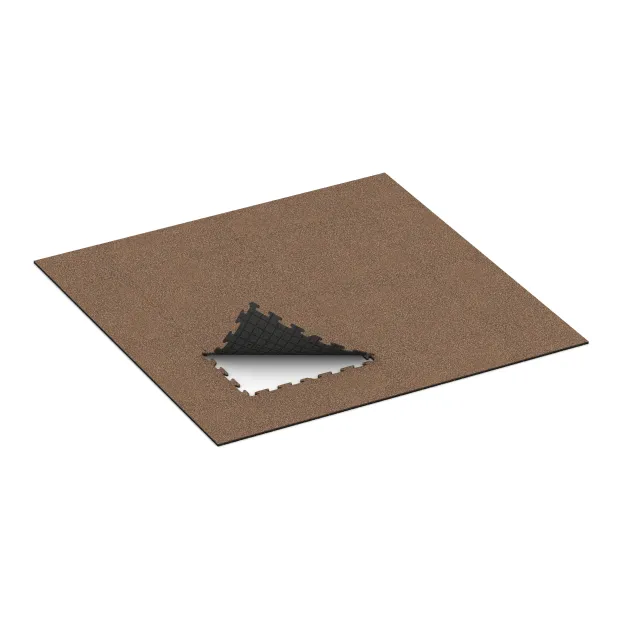Rubber stair tile BZ "Bark & Bast"
- /
-
Delivery in approx.
7-14 days - £45.60 / 1 Piece / m²
- (14.94 kg / Piece)
EAN: 4251469302914 | Item no.: 0291
A safe and practical stair surface is essential wherever steps are used, indoors or outdoors. The rubber stair tile from WARCO combines a slip-resistant finish with resilient properties, providing a durable and easy-care solution for many types of staircases.
Material & structure
The stair tile is made from PU-bonded rubber granulate. This robust and elastic material is permanently weather-resistant. Its slightly textured surface ensures reliable slip resistance in both wet and dry conditions, while the resilient design absorbs impact and makes every step more comfortable.
Connection system
Each tile is 1.8 cm thick and available in sizes of 50 × 50 cm and 100 × 100 cm. The all-round puzzle connection allows the tiles to interlock neatly. Even cut sections can be fitted securely, so narrow or irregular steps can be covered with minimal waste.
Installation
The stair tiles are cut to size and glued directly onto the existing step surface. WARCO recommends PU adhesive OP, or the ALLESDICHT sealing system if additional moisture protection is required. A stair edge profile made of metal or plastic should always be installed on the step front. It provides a neat visual finish and protects the nosing against wear.
Properties & maintenance
The rubber stair covering reduces noise and vibration, particularly on metal or wooden stairs. It withstands temperature changes without deformation and remains dimensionally stable. Light dirt is washed away by rain; more stubborn soiling can be removed with a broom or pressure washer.
Benefits
The rubber stair tile from WARCO creates a safe, quiet and comfortable stair surface. Easy to install, durable and low-maintenance, it combines slip resistance with long-lasting quality – the ideal solution for both outdoor and indoor stairs.
Discount
Product Highlights
Characteristics
Product Details – Material and Structure
Comparative values
To calculate how many tiles you need for your project, simply use the online installation planner available in the shop. This free browser-based tool is directly accessible on each product page – just below the price and quantity selection. Click on “Plan installation” to open the tool instantly – no registration or download required.
Enter the dimensions of your area, such as the length and width in metres. The planner will then automatically calculate the total number of tiles required, including a realistic allowance for offcuts. You’ll also be shown a suitable layout pattern for the selected product. The tool is user-friendly, accurate and ideal for planning your material requirements with confidence.
Yes, that is the standard approach. The vast majority of our customers – whether private, municipal, or commercial – install the delivered WARCO tiles themselves or with their own staff. The installation is simple and requires no special skills. Only fitting the curb into a concrete foundation with back support demands a little extra craftsmanship. Cutting the elements to size and laying them on a suitable substrate is not challenging. You can find all essential installation information in our Expert Advice – FAQ section on our website.
WARCO offers several connection systems for floor tiles, each differing in design, installation method and visual appearance. Below is an overview of the key differences:
Puzzle joint (visible)
In this system, the tile edges feature an interlocking profile reminiscent of classic jigsaw teeth or mushroom-shaped connectors. During installation, the profiles of adjacent tiles interlock to form a continuous connection across the full tile thickness.
The joint profile may be formed directly during pressing or precisely cut after the tile has cured. Whether the joint is visible in the finished surface depends on the edge finish (e.g. with or without chamfer) and the surface colouration.
The symmetrical shape ensures uniform load transfer and makes this type of joint the most mechanically stable option.
Plug-in connectors (plastic dowels)
This system uses separate connecting elements, typically round plastic dowels, which are inserted into pre-drilled holes along the sides of the tiles. The tiles themselves have smooth, straight edges similar to precast concrete slabs.
Installation is carried out in a half-bond (stretcher bond) pattern: each tile is connected via dowels to two tiles in the row above and two in the row below. This prevents lateral shifting, although some movement along the length of the dowels remains possible. For this reason, an edge restraint must be installed around the perimeter to stabilise the entire area.
Concealed puzzle joint
This method is based on the same mechanical principle as the classic puzzle joint, but is designed to be invisible in the finished surface. The interlocking profile is located on the underside of the tile, integrated into a rebated step joint.
Two tile edges feature a positive locking profile, the other two a matching negative profile. When laid, the tiles interlock securely from below, forming a durable mechanical connection. From above, the surface appears seamless and aligned, typically with a clean, square joint pattern similar to a chessboard layout.
Good design made easy.
